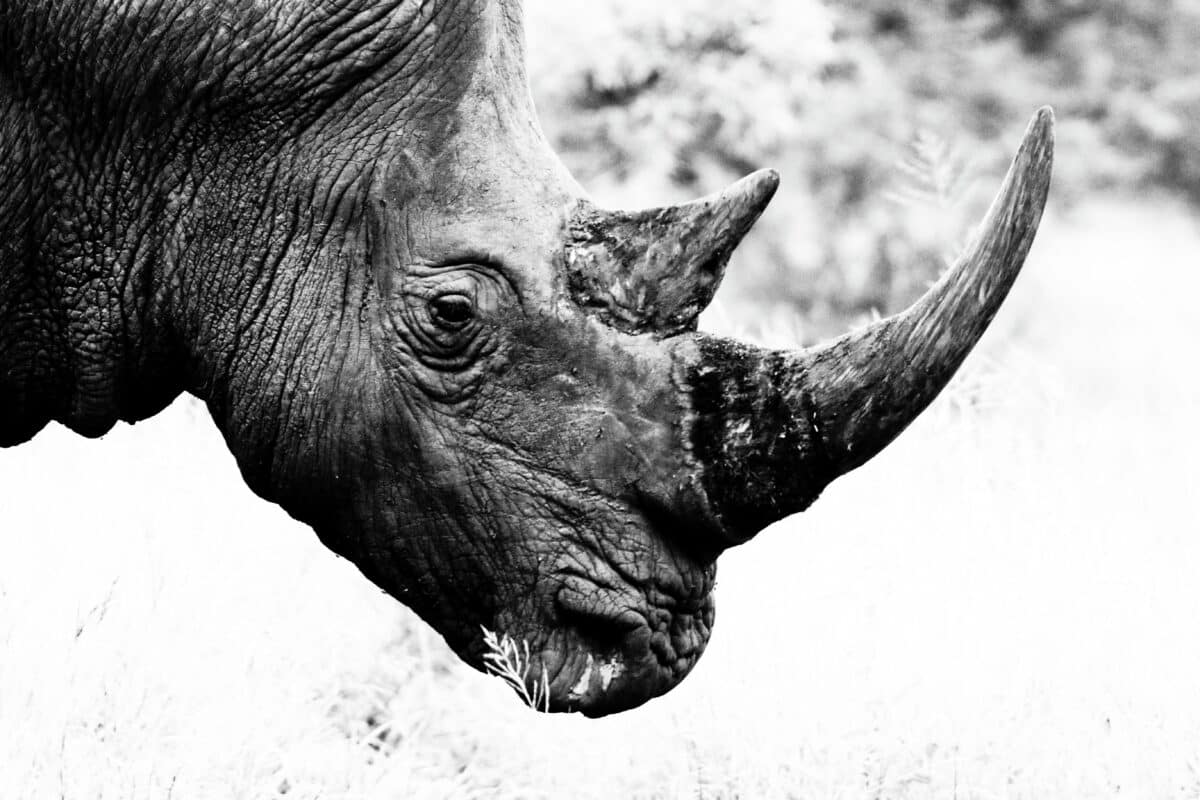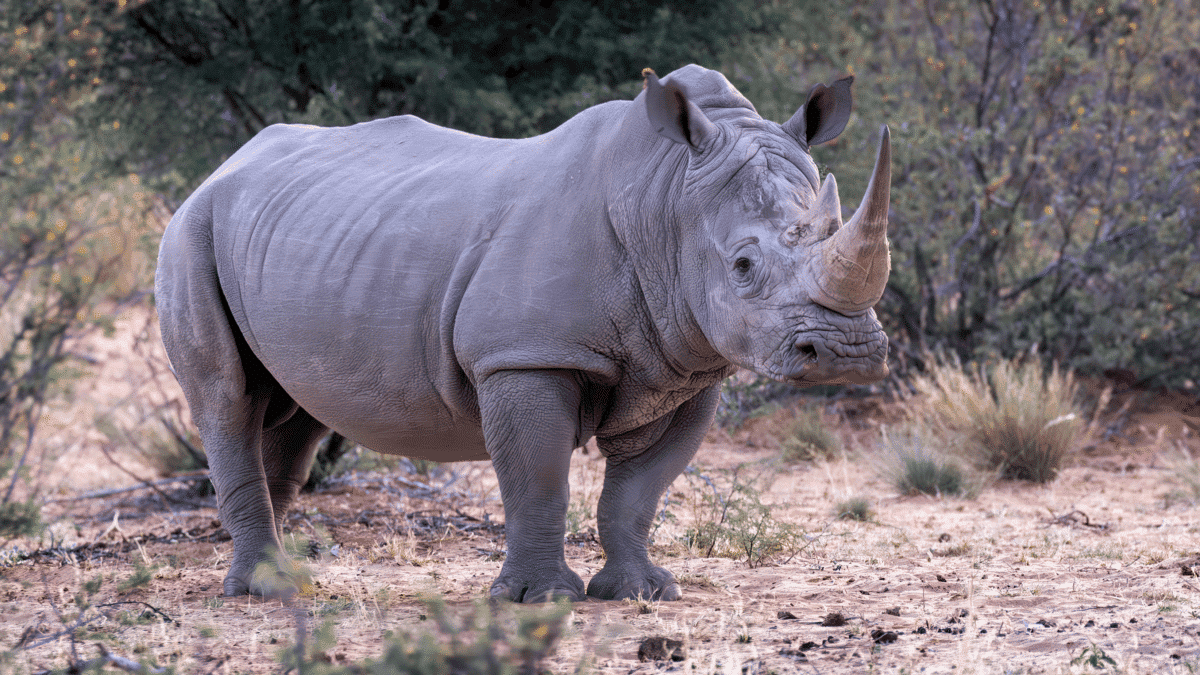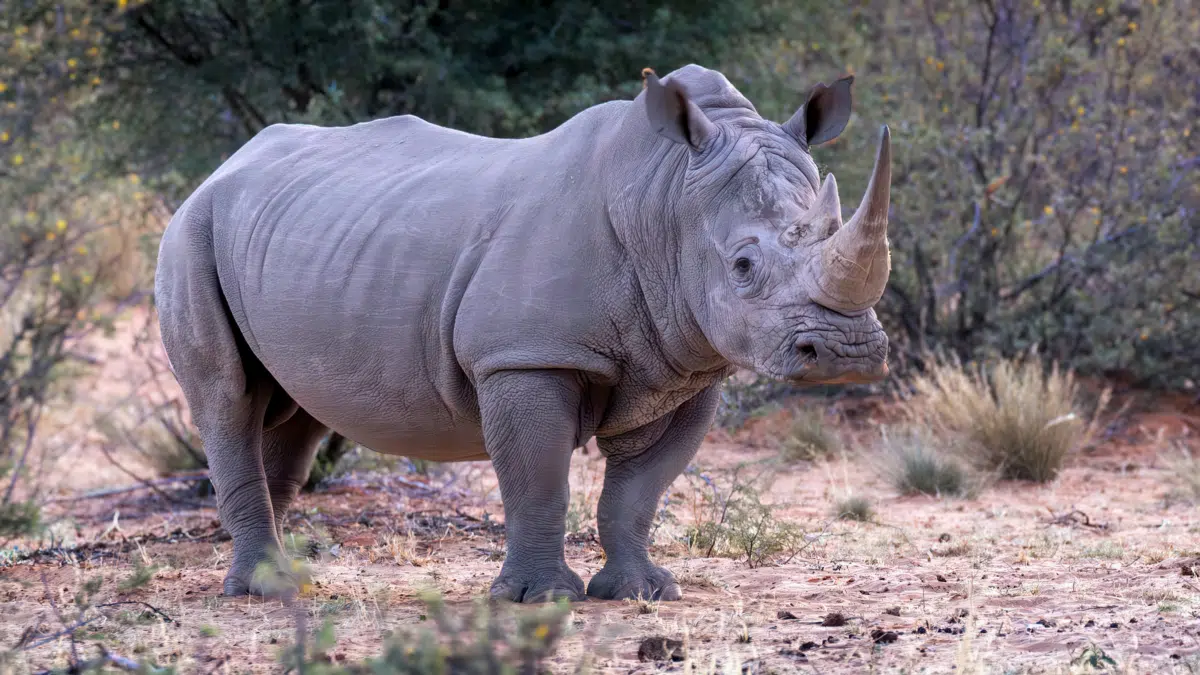Embarking on a journey into the fascinating world of rhinos, we unveil the colossal giants that once roamed the Earth. While the white rhinos claim the title for the largest among the living species, their size is nothing short of astonishing. Join us as we delve into the realms of these magnificent creatures, exploring their immense physical characteristics, habitats, behavior, diet, and the record-breaking individuals that have left an indelible mark in the annals of wildlife history.

The White Rhino: Majestic Giants of Grasslands
Found predominantly in the grassy savannas of Africa, the white rhinoceros (Ceratotherium simum) is the largest among its kin. Weighing up to a staggering 3,500 kg, these majestic creatures can be as heavy as a small elephant. Picture a colossal mass, exceeding 550 stones or well over 3 tonnes – a living testament to nature’s awe-inspiring diversity.
Physical Characteristics:
Cloaked in a thick skin that appears almost armor-like, white rhinos boast a distinctive squared-off mouth, adapted for grazing on grass. Despite their intimidating appearance, these giants are primarily herbivores, utilizing their broad lips to nibble on vegetation. The massive size and sturdy build serve as a testament to their resilience in the wild.
Behaviors and Habitat: Roaming the Vast Savannahs
White rhinos are social creatures, often congregating in small groups known as crashes. Within these tight-knit communities, they communicate through a combination of vocalizations, body language, and even dung markings. The expansive grasslands of Africa, from South Africa to Sudan, provide the ideal backdrop for their nomadic lifestyle.
Interesting Fact:
Did you know that the term “white” in white rhino is a misinterpretation of the Dutch word “wijde,” meaning wide? Early European settlers misunderstood the term, leading to the misleading classification of these magnificent creatures.
Diet: Grazers Extraordinaire
Despite their gargantuan size, white rhinos are predominantly grazers, relying on a diet composed mainly of grasses and leaves. Their massive bulk is sustained by an efficient digestive system, allowing them to extract nutrients from even the toughest vegetation.
Remarkable Fact:
Imagine a creature as large as a small elephant, sustaining itself on a diet primarily consisting of humble grass – a testament to the marvels of nature’s engineering.
Lifespan: A Glimpse into Rhino Longevity
In the wild, white rhinos have an average lifespan of 40 to 50 years. Their resilience to environmental challenges, coupled with protective measures implemented by conservationists, contributes to their prolonged existence. However, the persistent threat of poaching remains a dark shadow on their continued survival.
The Record-Breaking Giants: White Rhinos in the Spotlight
While the average weight of white rhinos is impressive, there have been record-breaking individuals that have captured the world’s attention. The heaviest white rhino on record tipped the scales at a colossal four and a half tons, rivaling the weight of a small elephant. Though it’s unlikely that such colossal individuals roam freely today, their existence stands as a testament to the extraordinary diversity within the rhino species.

Historical Marvel
In a bygone era, the Paraceratherium held the title for the largest rhino ever recorded, weighing an astounding twenty tons. However, these colossal creatures, reminiscent of ancient giants, have long been extinct, disappearing from the Earth during the Oligocene period.
Conclusion
In our exploration of the largest rhinos ever recorded, we’ve uncovered the remarkable world of white rhinos – majestic, colossal, and resilient. From the vast grasslands they call home to their extraordinary physical characteristics, these giants of the wild leave an indelible mark on the canvas of nature. As we navigate the challenges faced by rhinos in the modern world, let us cherish the awe-inspiring legacy of these magnificent creatures and strive to ensure their continued existence for generations to come.
Thank you for following along with this article –
Next up in the animal kingdom:
Join our Forum for free today!

- Big Cats Love Mouthing Affection - July 22, 2024
- Kind Elephant Merciful To Lion Cubs - July 22, 2024
- Beachgoers Save Massive Shark Stranded In Florida - July 22, 2024

